When it comes to advancing your yoga practice, arm balancing poses are integral for both, flexibility and strength enhancing postures. Arm balances and strengthening postures offer unique challenges that help develop not only the upper body but also improve core strength, balance, and mental focus. Whether you’re just starting to explore arm poses or are ready to level up your practice, this blog provides insights on how to use these postures to advance both your strength and flexibility.
Why Focus on Arm Poses?
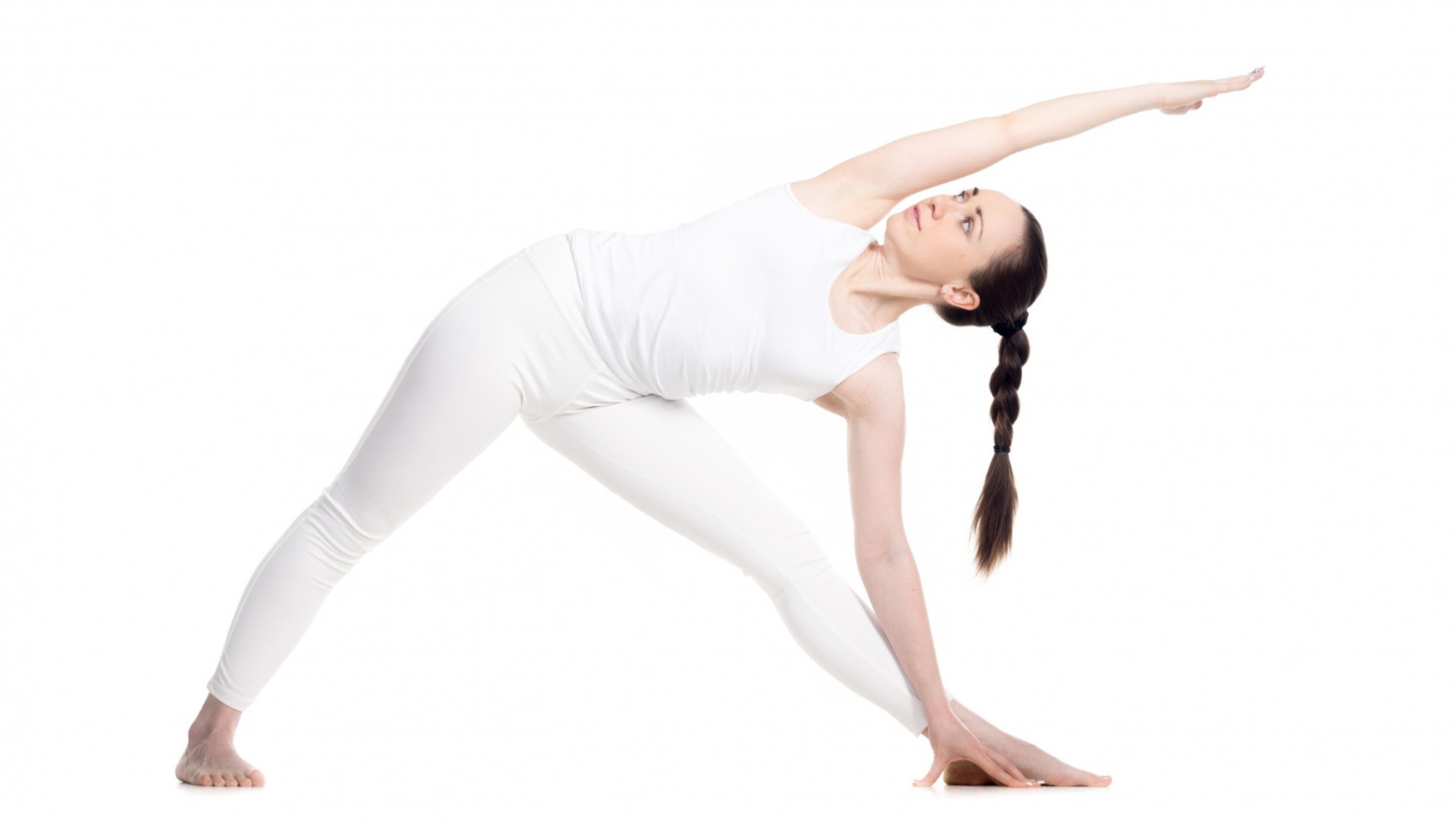
Arm poses are essential for cultivating full-body strength and functional flexibility. These poses require you to engage multiple muscle groups, including the arms, shoulders, chest, back, and core. When practicing arm poses regularly, you'll notice an increase in upper body strength, enhanced flexibility in the wrists and shoulders, and a heightened sense of balance.
Moreover, arm balances have a mental component. They demand focus, mindfulness, and a sense of courage. The fear of falling is a common obstacle, but learning to trust your body and gradually working on control helps build confidence both on and off the mat, and helps you overcome this fear.
Warm-ups are a must
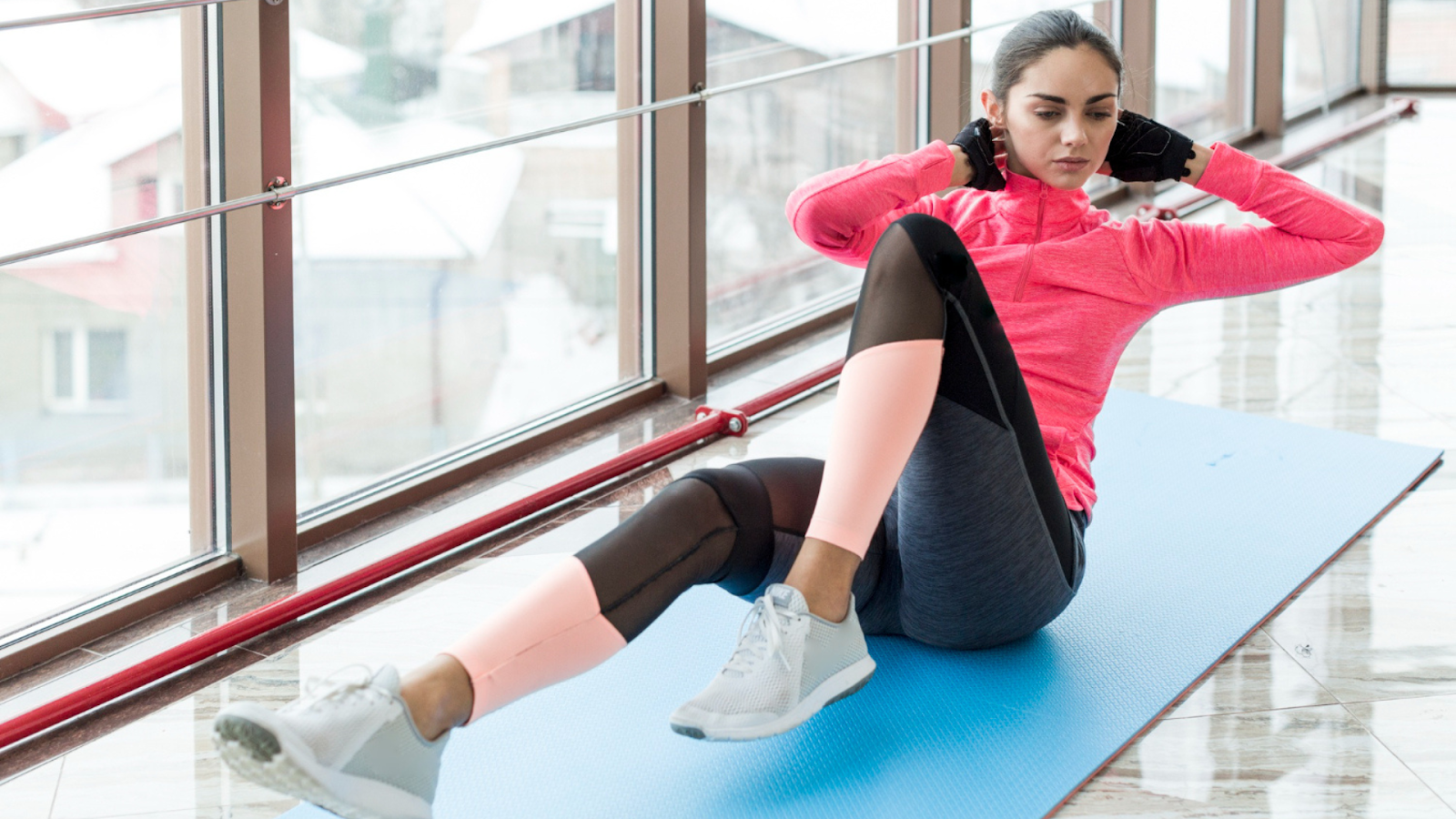
Before diving into more advanced arm poses, it is very critical to properly warm up. This ensures you avoid over straining as well as injuries. A dynamic warm-up will prepare the muscles and joints, making it easier to move into arm balances and holds. Here are a few recommended stretches and movements:
- Wrist stretches: Move your wrists in circles, first clockwise and then counterclockwise. Place your palms on the mat with fingers pointing toward you to stretch the wrists gently.
- Shoulder openers: Try Eagle arms or Cow Face pose arms to create mobility in your shoulders.
- Core activation: Engage your core with poses like Plank or Dolphin pose to prepare for the work ahead.
- Cat-Cow flow: Move between Cat and Cow pose to stretch the spine, shoulders, and neck, helping your body ease into arm balances.
Arm Balancing Yoga Poses for Strength and Flexibility 1. Plank Pose (Phalakasana):

Start with a simple arm strengthening pose, the Plank pose. Known as Phalakasana, plank pose is one of the most effective poses for strengthening the arms, shoulders, and core. It also helps you develop wrist flexibility and shoulder stability - both essential for more advanced arm balances.How to practice:
- Start on your hands and knees.
- Spread your fingers wide and press the palms firmly into the mat.
- Step your feet back, bringing your body into a straight line from head to heels.
- Engage your core and avoid letting your hips sag.
- Hold for 30 seconds to a minute, breathing deeply.
Once you are ready, you can try the Side Plank. Move into the side plank (Vasisthasana) by shifting your weight onto one arm and stacking your legs. This variation will further challenge your balance and strengthen the supporting arm and shoulder.
2. Chaturanga Dandasana (Low Plank):
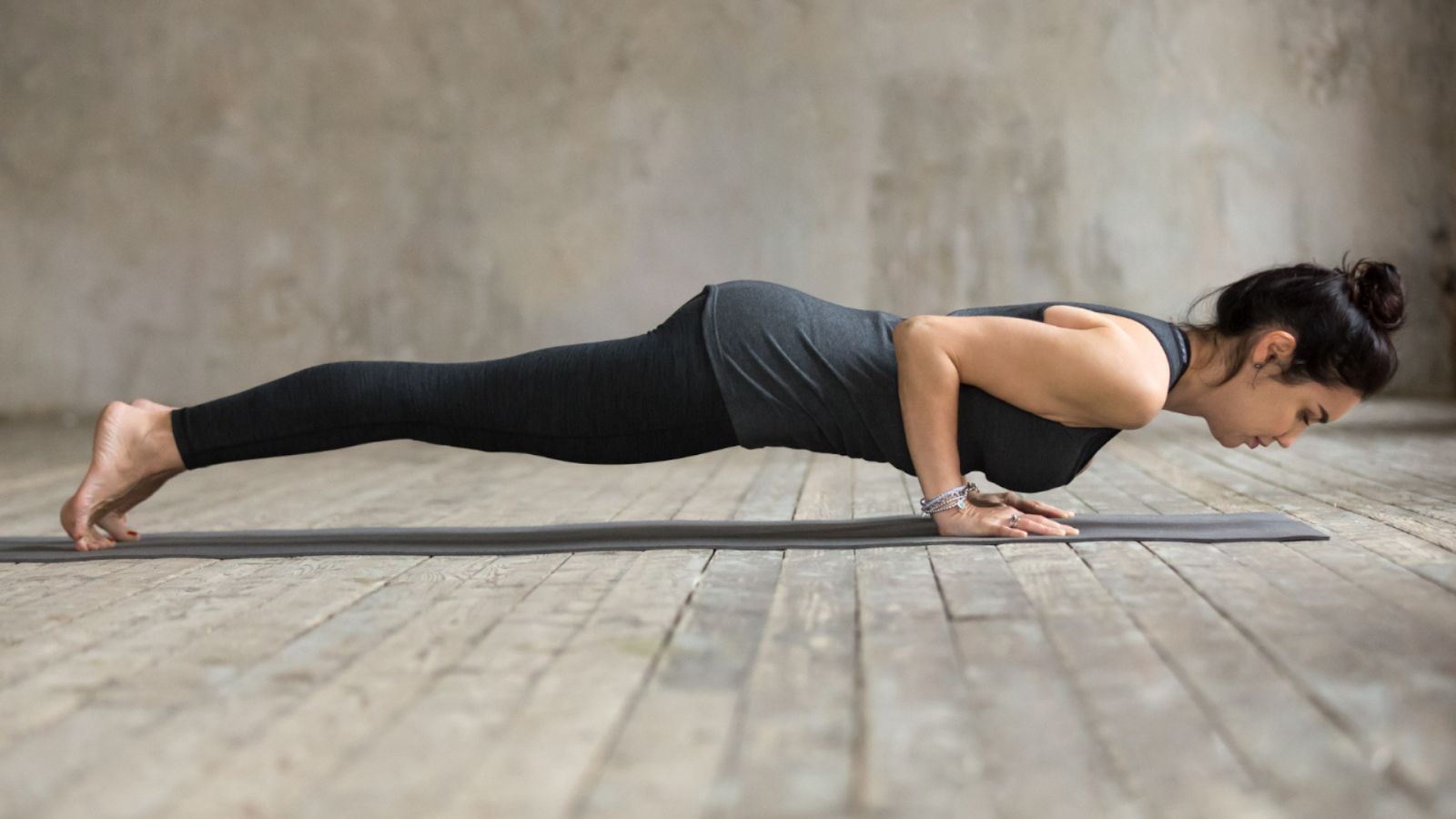
Chaturanga strengthens the triceps, shoulders, and core, making it an essential transition pose in many vinyasa yoga sequences. It also helps improve wrist flexibility and builds the arm strength necessary for advanced poses like arm balances and inversions.How to practice:
- From plank pose, slowly lower your body, keeping your elbows tight to your sides.
- Your elbows should form a 90-degree angle, with your body in a straight line.
- Engage your core and legs to support the weight of your body.
- Hold for a few seconds before lowering completely or transitioning into upward-facing dog.
Hold Chaturanga for longer periods or move into it from a three-legged plank (one leg lifted) to build even more strength in the arms and core.
3. Crow Pose (Bakasana):
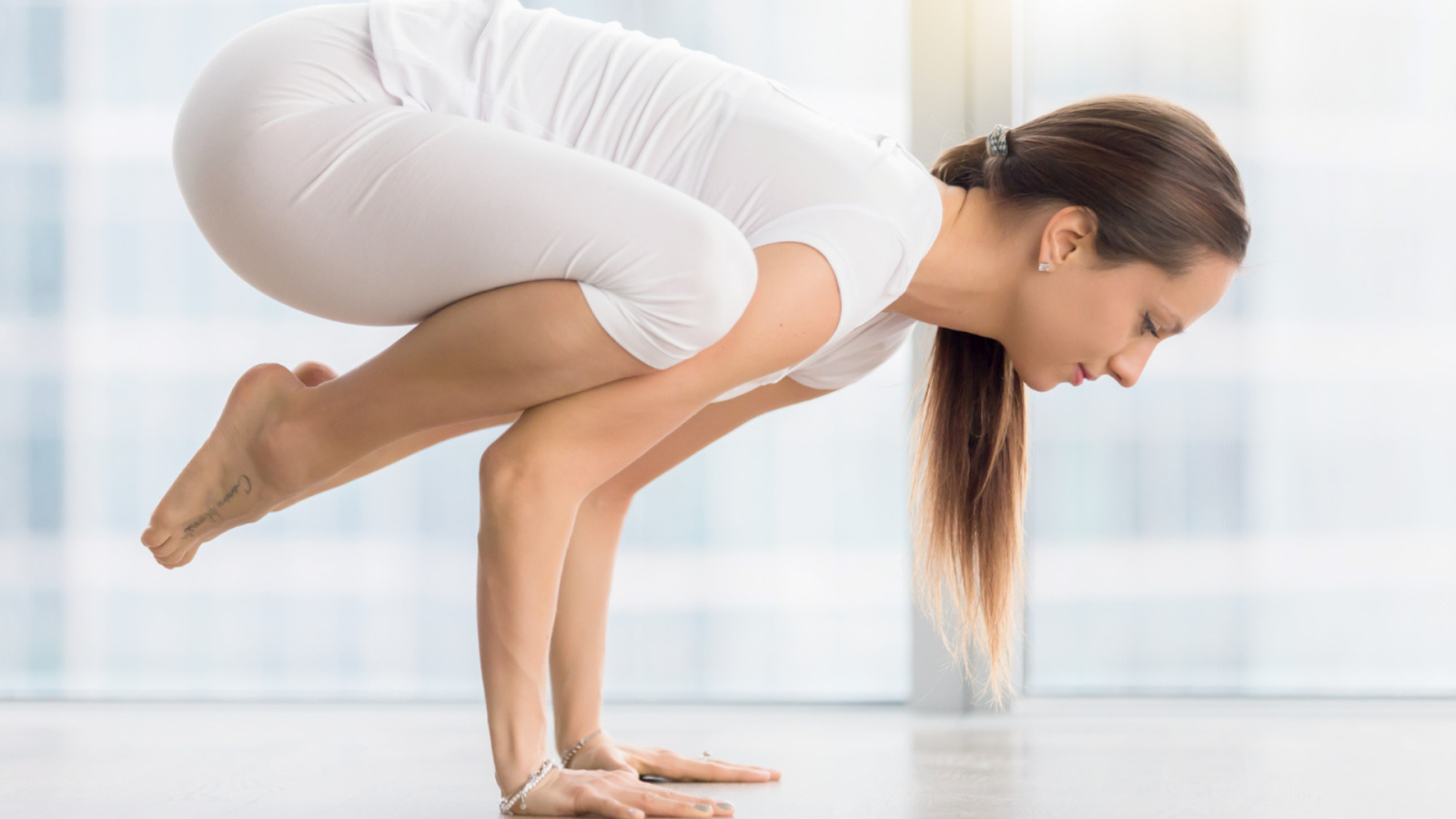
Crow pose is one of the most accessible arm balances and helps build wrist, arm, and shoulder strength. It also requires a strong core and helps improve coordination and focus. Once you’re comfortable in the crow pose, you can even try jumping back into Chaturanga from Bakasana or explore a flying crow by extending one leg back while balancing on your hands.How to practice:
- Begin in a squat position with your feet together.
- Place your hands on the mat in front of you, shoulder-width apart, fingers spread wide.
- Lift your hips and try to place your knees on the backs of your upper arms.
- Shift your weight forward until your feet come off the ground.
- Balance on your hands, engaging your core and keeping your gaze forward.
- Hold for as long as possible.
4. Side Crow (Parsva Bakasana):
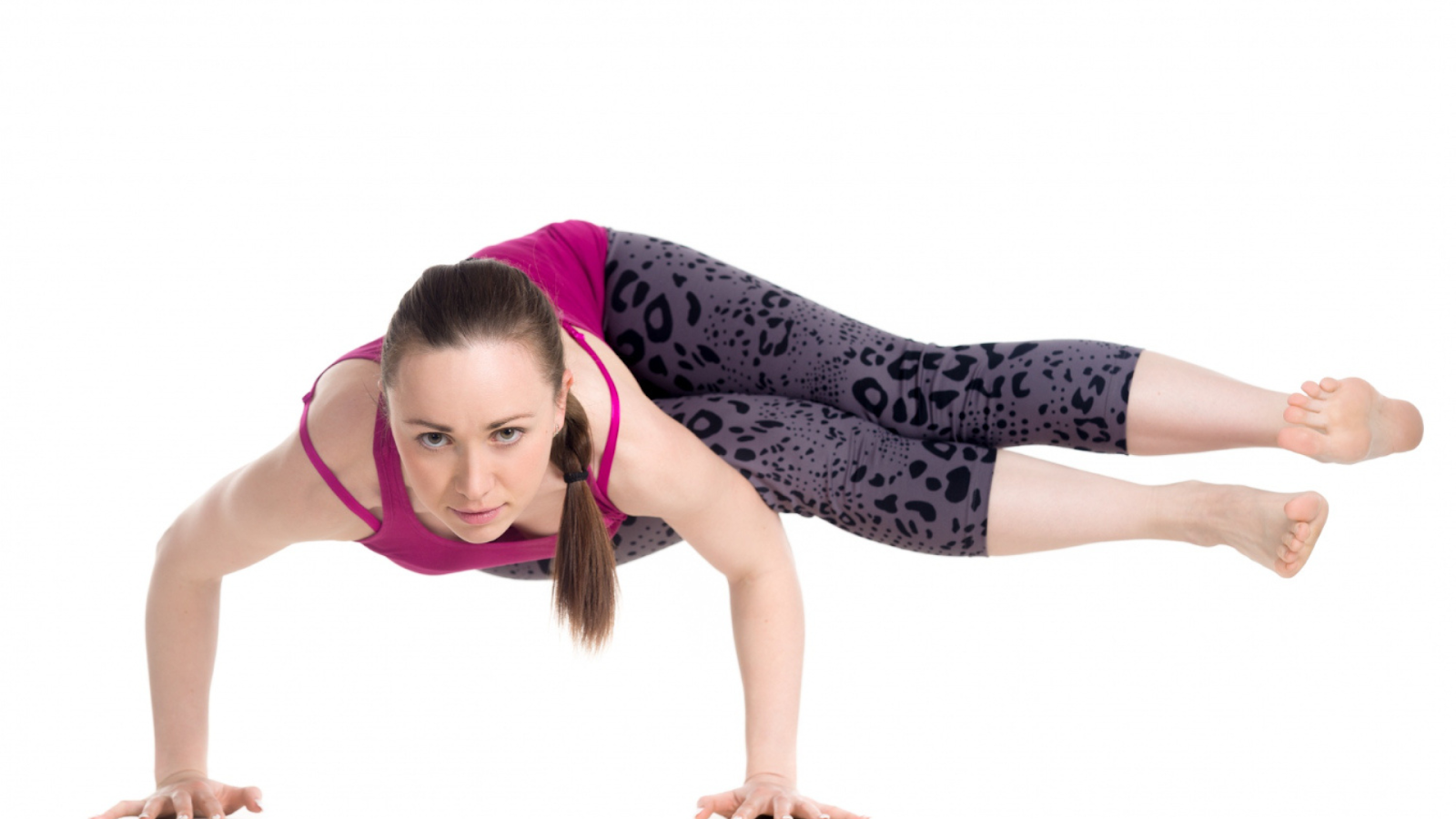
Side Crow is a great pose to advance your practice after mastering the basic crow pose. This arm balance adds an element of twist, which enhances flexibility in the spine and works the oblique muscles.How to practice:
- Start in a squat position, bringing your palms to prayer.
- Twist your torso to one side, placing your outer elbow against the opposite thigh.
- Place your hands on the mat shoulder-width apart, fingers spread wide.
- Shift your weight onto your hands, lifting your feet off the ground and balancing on your arms.
- Engage your core and twist deeper to stay balanced.
Once you’re steady in Side Crow, experiment with extending your legs out to the side in a straight line (Eka Pada Koundinyasana). This variation will further challenge your balance and increase the stretch in your spine.
5. Forearm Stand (Pincha Mayurasana):
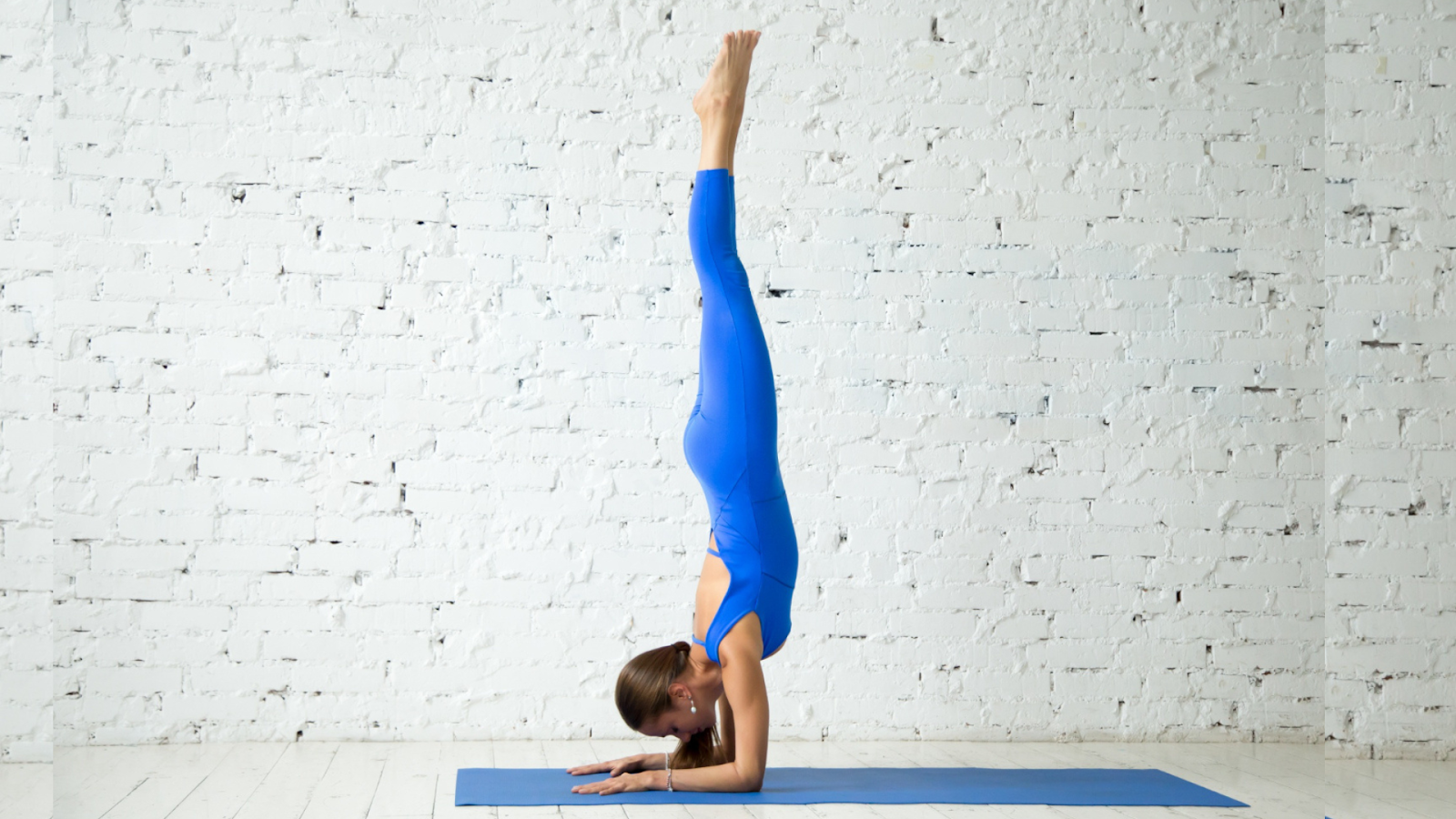
Forearm stand builds strength in the shoulders, arms, and core, while also improving flexibility in the back and shoulders. It’s a great inversion for those looking to deepen their balance practice without putting as much pressure on the wrists as the handstand does. As you advance, you can work on holding the forearm stand for longer durations or practice transitioning from a headstand or handstand to forearm stand to challenge your strength and control.How to practice:
- Start in Dolphin pose with your forearms on the mat, elbows shoulder-width apart.
- Walk your feet closer to your body to lift your hips.
- Kick one leg up and then the other, coming into a full inversion.
- Engage your core and press firmly through your forearms to stay balanced.
6. Handstand (Adho Mukha Vrksasana):
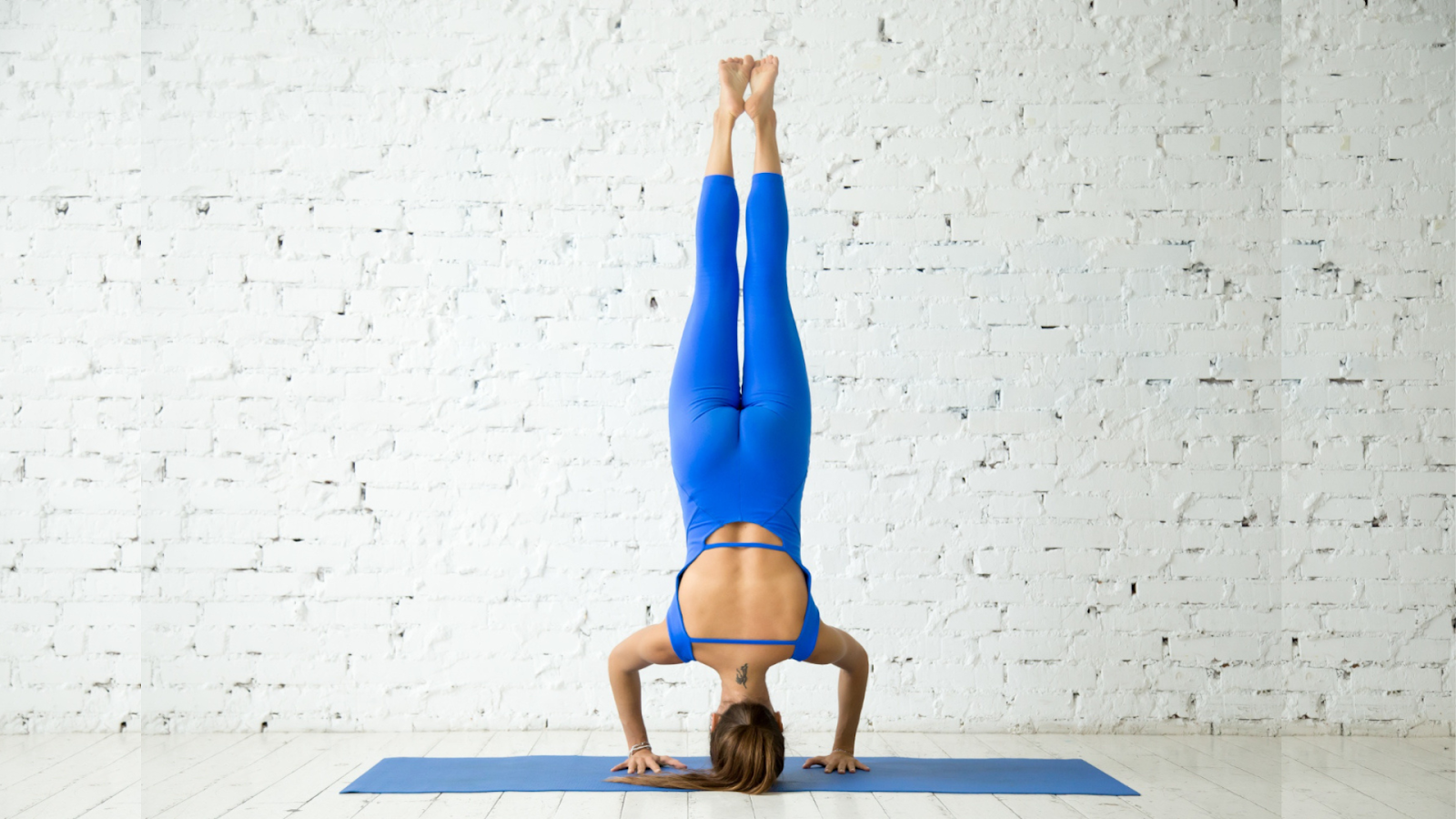
Handstand is the ultimate test of arm strength, balance, and flexibility. This inversion strengthens the shoulders, arms, wrists, and core while improving balance and focus. You can also try to work on holding the handstand away from the wall, or try variations like handstand splits or transitioning from handstand to Chaturanga.How to practice:
- Start in Downward Facing Dog.
- Walk your feet in, bringing your hips over your shoulders.
- Kick one leg up, followed by the other, coming into a full handstand.
- Engage your core and press firmly through your hands to maintain balance.
7. Eight-Angle Pose (Astavakrasana):

Eight-Angle Pose is a challenging arm balance that strengthens the arms, shoulders, and core while enhancing flexibility in the hips and hamstrings. Once comfortable in Astavakrasana, you can even try the DragonFly Pose or Firefly Pose. How to practice:
- Start seated, with one leg over your shoulder.
- Place your hands on the mat, shoulder-width apart.
- Press into your hands, lifting your hips off the ground.
- Hook your legs around each other and extend them to the side while balancing on your arms.
Arm balancing poses offer endless opportunities to build strength and flexibility while deepening your yoga practice. As you explore these poses, remember to listen to your body and practice patience. With consistency and dedication, you’ll find yourself growing stronger, more flexible, and more confident on your yoga journey.Always learn how to practice challenging arm balancing poses live with experienced teachers to ensure safety. Meta Description: Explore how to build up to advanced arm balancing poses and the top arm balances to practice. Summary: Arm balances and strengthening postures offer unique challenges that help develop not only the upper body but also improve core strength, balance, and mental focus. Explore the top arm balances in yoga. FAQs:
- How to start practicing arm balances in yoga?
Before diving into more advanced arm poses, it is very critical to properly warm up. This ensures you avoid over straining as well as injuries. A dynamic warm-up will prepare the muscles and joints, making it easier to move into arm balances and holds.
- Why Focus on Arm Poses?
Arm poses are essential for cultivating full-body strength and functional flexibility. These poses require you to engage multiple muscle groups, including the arms, shoulders, chest, back, and core. When practicing arm poses regularly, you'll notice an increase in upper body strength, enhanced flexibility in the wrists and shoulders, and a heightened sense of balance.
- What are the top arm balancing poses?
Start with practicing crow pose, side crow pose, eight angle pose, handstand and forearm stand. Once your strength has built up, you can try challenging transitions.











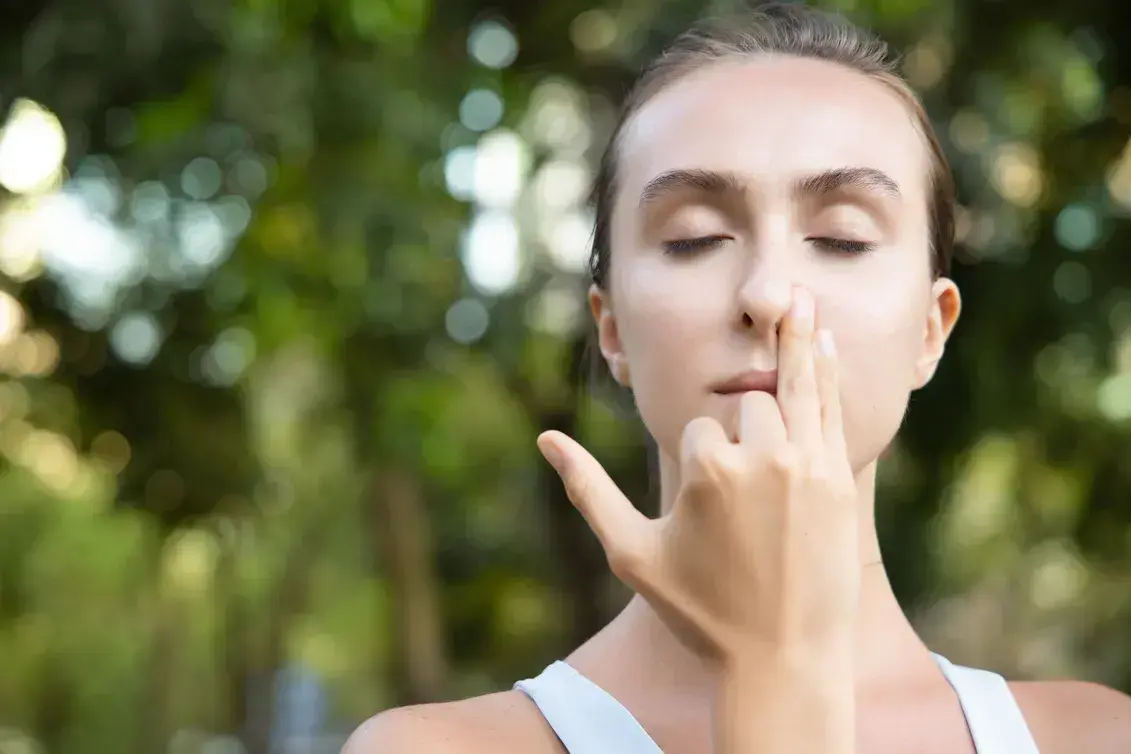



.jpg)
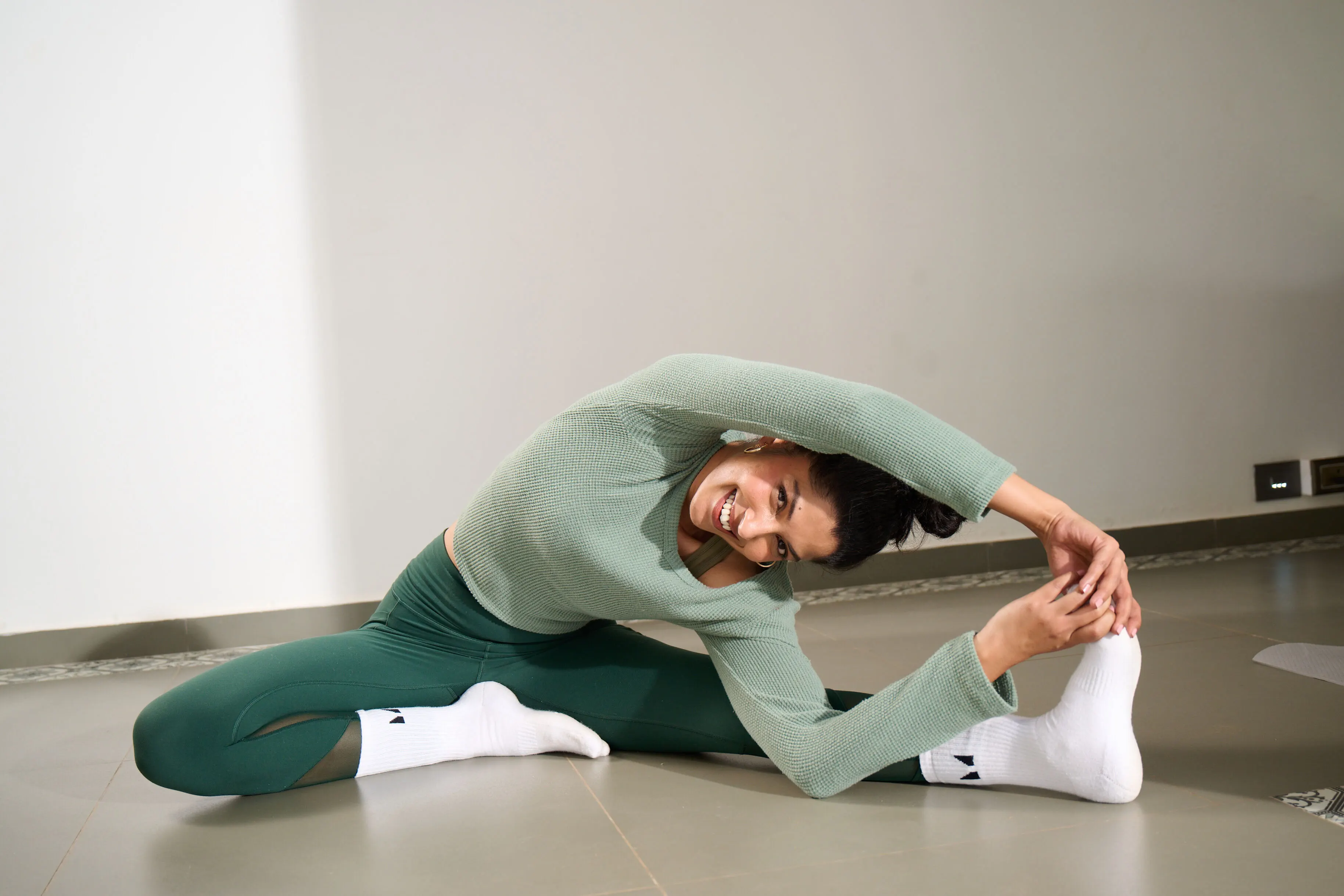










%201.png)

%201.svg)






%201.svg)